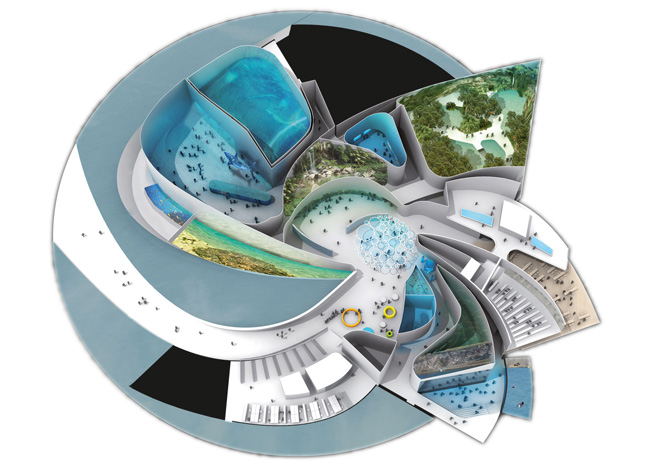The story
The story behind Den Blå Planet
Den Blå Planet is the largest and most imposing aquarium in northern Europe and occupies a unique location on the Øresund coast, eight kilometres from Rådhusplads at the centre of Copenhagen. The aquarium also enjoys an ideal location in the municipality of Tårnby, at the centre of a traffic hub near the motorway, Copenhagen Airport, the Øresund bridge, the Metro and international rail connections. Whether you approach Denmark by air, sea or via the bridge from Sweden, Den Blå Planet stands out as one of the capital's most striking landmarks. It is also one of Denmark's biggest tourist attractions.
It all started in 1939
The National Aquarium Denmark in Charlottenlund was founded by Knud Højgaard, a civil engineer, and opened its doors to the public for the first time in 1939. Four months after its inauguration World War II broke out and seven months later Denmark was occupied. The borders were subsequently closed and it became extremely difficult to acquire exotic animals for the aquarium. Through a spectacular effort, the aquarium was kept alive with fish native to and fish bred in Denmark. After the war the aquarium was in a state of disrepair and Knud Højgaard organised a complete renovation. During the next few decades the building was overhauled several times and new extensions were built.
For many years the original building in Charlottenlund was the setting for education and entertainment for both children and adults. However in later years the institution went into decline and became increasingly in need of repair and modernisation.
Preparations for Den Blå Planet
As early as the mid-1990s, the then Director of the National Aquarium Denmark, Jesper Horsted, started to formulate initial ideas for the architecture and design of a modern aquarium. The old building was in need of renovation – a costly undertaking that would ultimately not enhance the visitors' experience in any significant way. Enlargement was also on the agenda, but there was no scope for the desired expansion and the gains which would have been made in terms of increased attraction value did not justify the cost of such a project.
In other words, a new location and a different setting had to be found which would offer future visitors a whole new experience. Taking inspiration from visits to other aquariums throughout the world and adding his own ideas, Jesper Horsted drew up his principles and wishes for the design of a new aquarium. These principles and wishes later formed the basis for the international competition for Den Blå Planet.
Previously far removed from the world elite, Denmark is now once more at the forefront internationally in terms of aesthetics, species diversity and quality of communication.
